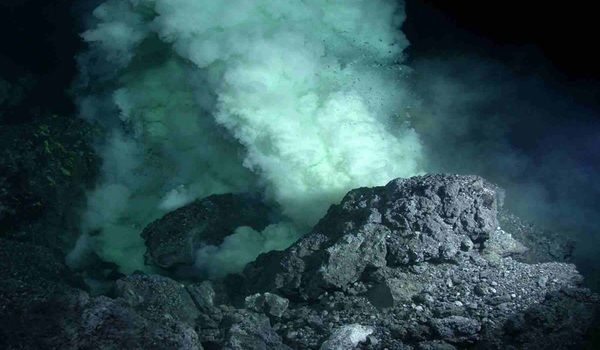A thorough examination of the volcanic underwater deposits surrounding Japan’s Kikai caldera revealed both the mechanics of deposition and the scale of the event. As a result, the Kobe University study team discovered that the volcanic explosion 7,300 years ago was the greatest in the Holocene by far.
In addition to lava, volcanoes spew vast amounts of pumice, ashes, and gasses in a fast-moving flow known as “pyroclastic flow,” and its sediments provide vital information about previous eruptions. For volcanoes on land, geologists understand the sedimentation mechanism of pyroclastic flows well, but the deposits themselves are quickly lost owing to erosion.
On the other hand, for volcanoes on oceanic islands or along the shore, the pyroclastic flow deposition process is mostly unknown, both because the interaction with water is poorly understood and because trustworthy data is difficult to get, making it scarce. For these reasons, it is impossible to assess the impact of numerous previous eruptions on the climate and history.
Due to the fact that volcanic ejecta deposited in the sea preserve well, they record a lot of information at the time of eruption. By using seismic reflection surveys optimized for this target and by identifying the collected sediments, we were able to obtain important information on the distribution, volume, and transport mechanisms of the ejecta.
Dr. Shimizu
A Kobe University research team led by SEAMA Nobukazu and SHIMIZU Satoshi took to the seas on the Kobe University-owned training vessel Fukae Maru (since replaced by the newly built Kaijin Maru) to conduct seismic imaging and sediment sampling around the Kikai caldera off the south coast of Japan’s Ky?sh? Island. The outstanding detail of the seismic reflection data revealed the sedimentary structure with a vertical resolution of 3 meters and down to a depth of several hundred meters below the seafloor.
Shimizu explains: “Due to the fact that volcanic ejecta deposited in the sea preserve well, they record a lot of information at the time of eruption. By using seismic reflection surveys optimized for this target and by identifying the collected sediments, we were able to obtain important information on the distribution, volume, and transport mechanisms of the ejecta.”

In their article published in the Journal of Volcanology and Geothermal Research, the geoscientists report that an eruption that happened 7,300 years ago ejected a large amount of volcanic products (ash, pumice, etc.) that settled in an area measuring more than 4,500 square kilometers around the eruption site. With a dense-rock equivalent volume of between 133 and 183 cubic kilometers, the event was the largest volcanic eruption to have taken place within the Holocene (the most recent 11,700 years of Earth’s history following the end of the last ice age) known to science.
During their examination, the researchers determined that the sediments on the ocean floor and those deposited on surrounding islands are of the same origin, and by examining their distribution around the eruption site, they were able to elucidate the interaction between the pyroclastic flow and water. They discovered that the underwater portion of the flow may go long distances, including upwards.
Their findings provide fresh insights into the elusive dynamics of volcanic mega events, which may aid in detecting the remains of other eruptions and determining their sizes. Seama notes, “Large volcanic eruptions, such as those yet to occur in modern civilization, rely on sedimentary records, but it has been difficult to estimate eruptive volumes with high precision because many of the volcanic ejecta deposited on land have been lost due to erosion.” However, gigantic caldera eruptions are an essential geoscience phenomenon, and because we know they have previously altered global climate and consequently human history, comprehending this phenomenon is also socially significant.
In this light, it is fascinating to think that the event that created a caldera about the size of a modern capital city was the largest volcanic event since humans have spread all over the globe.
















